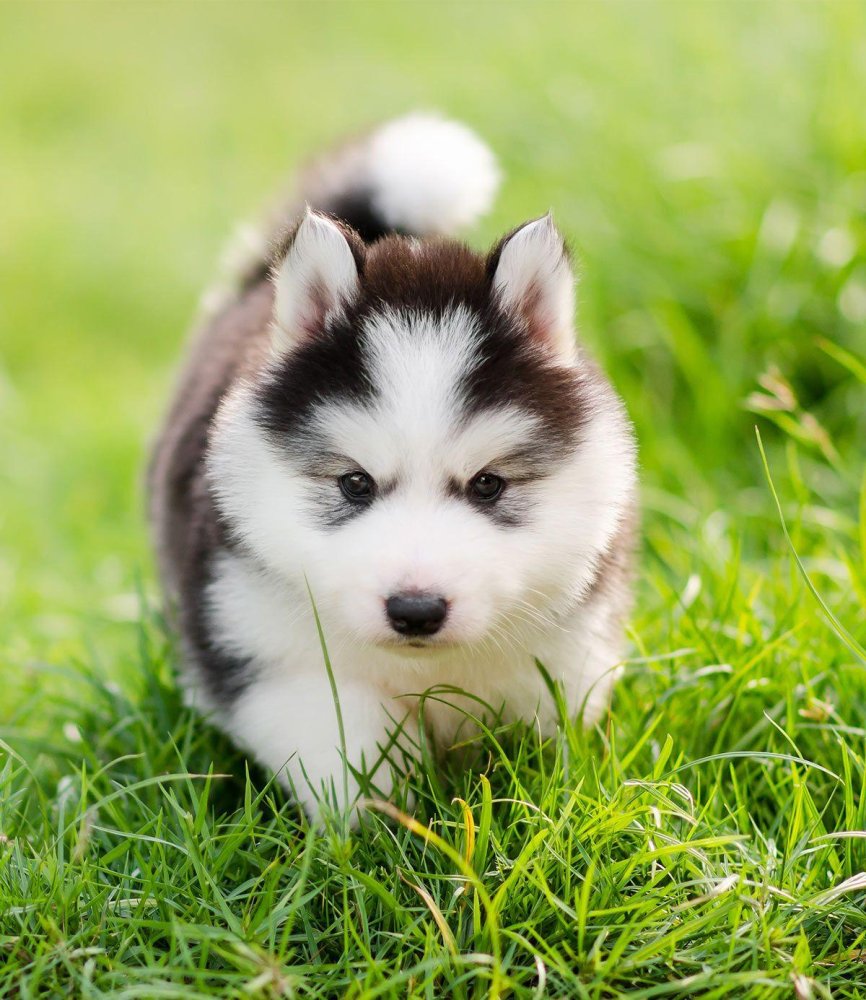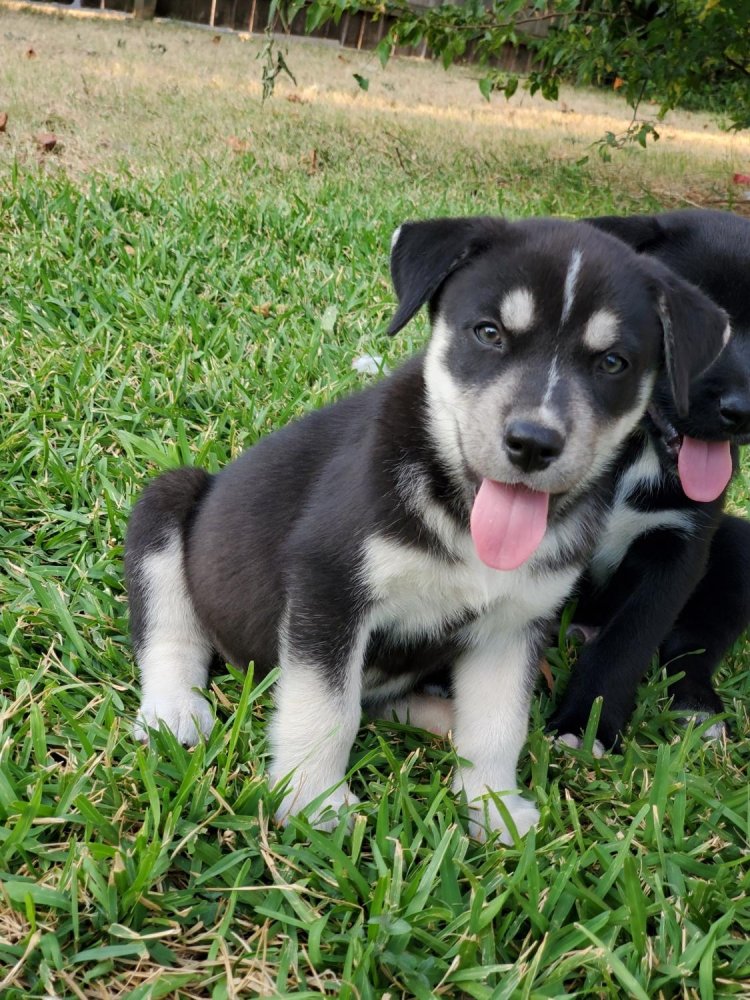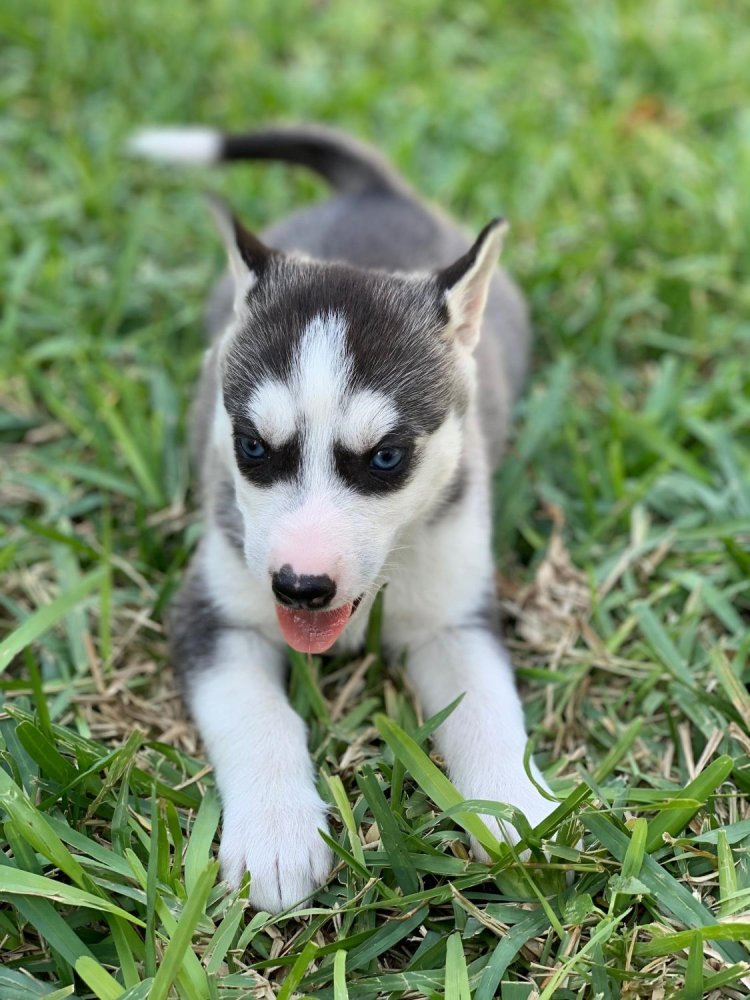- Breed Category: Working dog
- Country of Origin: United States
- Average Height: 50-60 cm (20-24 inches)
- Average Weight: Males 21-25 kg, Females 17-22 kg
- Average Life Span: 10-15 years
- Grooming Requirements: Moderate, regular brushing needed
- Exercise Requirements: High, needs daily vigorous exercise
- Coat Type: Double coat, medium length
- Coat Color Variations: Various, often multi-coloured
- Shedding Level: High, especially during shedding season
- Ear Type: Erect, triangular
- Tail Type: Curled over back
- Temperament: Energetic, friendly, intelligent
- Intelligence Level: High, quick learners
- Barking Tendency: Moderate, can be vocal
- Compatibility with Children: Good, generally friendly
- Compatibility with Other Pets: Good, with proper socialisation
- Training Ease: Moderate, requires consistent training
- Common Health Issues: Hip dysplasia, eye disorders
- Dietary Needs: High-quality, protein-rich diet
- Energy Level: Very high, needs active lifestyle
- Drooling Tendency: Low, minimal drooling
- Sensitivity to Weather: Tolerates cold well, heat sensitive
- Overall Maintenance Level: Moderate to high
- Original Purpose: Sled pulling, working dog
- Apartment Friendly: Not ideal, needs space
- Best Suited For: Active families, outdoor enthusiasts
- Cost of Ownership: Moderate to high
- Unique Traits: Exceptional endurance, strong work ethic
Ever found yourself wondering if your dog is getting enough exercise or mental stimulation? It’s a common concern for many dog owners, especially when it comes to breeds like the Alaskan Husky. Known for their boundless energy and intelligence, these dogs are not your average couch potatoes. They thrive on activity and purpose.
The Alaskan Husky is a unique breed, often mistaken for its Siberian cousin. However, it’s a distinct type, bred primarily for its working ability rather than appearance. This article aims to shed light on the Alaskan Husky’s characteristics, rich history, and the care they require.
Originating from the harsh climates of Alaska, these dogs were developed by mushers for sledding. Their lineage is a mix of various breeds, selected for speed, endurance, and strength.
Early Development and Historical Significance of the Alaskan Husky

Early Development of the Breed
The Alaskan Husky’s roots trace back to the indigenous peoples of Alaska, who needed a reliable and resilient sled dog. These dogs were not bred for looks but for their ability to work in the harshest conditions. Over time, mushers selectively bred them for traits like speed, endurance, and strength, resulting in the versatile Alaskan Husky we know today.
Role in Alaskan Sled Dog Racing and Transportation
Alaskan Huskies have played a crucial role in sled dog racing and transportation. Their unmatched stamina and agility make them the top choice for competitive racing, including the famous Iditarod. Beyond racing, they have been indispensable in transporting goods and people across the snowy terrains of Alaska, proving their worth as working dogs.
Key Historical Figures and Events
Figures like Leonhard Seppala, a legendary musher, were instrumental in the breed’s development. Seppala’s team of Alaskan Huskies gained fame during the 1925 serum run to Nome, showcasing their incredible capabilities. This event highlighted the breed’s importance and solidified its place in history.
Physical Characteristics
Alaskan Huskies are not defined by a specific appearance but typically have a lean, athletic build. They often have a dense coat, erect ears, and a bushy tail. Their eyes can be brown or blue, and their coat colours vary widely, reflecting their diverse ancestry.
Appearance and Unique Physical Traits
Alaskan Huskies are a fascinating mix of breeds, resulting in a variety of appearances. They usually have a lean, athletic build, perfect for their role as sled dogs. Their coat is dense, providing insulation against the cold, and comes in a range of colours, from black and grey to red and white. You might notice their striking eyes, which can be brown or blue, adding to their captivating look. Erect ears and a bushy tail complete their distinctive appearance.
What truly sets them apart is their incredible endurance and speed. These dogs are built for long-distance running, with a stamina that seems almost endless. Their agility and strength make them exceptional in sled dog racing, where they consistently outperform other breeds.
Temperament and Behaviour
Alaskan Huskies are known for their friendly and social nature. They thrive in environments where they can interact with people and other dogs. These dogs are intelligent and eager to please, making them relatively easy to train. However, they do require plenty of mental and physical stimulation to keep them happy. Without it, they can become bored and may resort to destructive behaviours. Their playful and energetic disposition makes them a joy to be around, especially for active families or individuals who love the outdoors.
Personality Traits and Suitability as a Family Pet

Alaskan Huskies are a bundle of friendliness and intelligence, making them a great choice for families. Their high energy levels mean they’re always up for an adventure, whether it’s a hike in the bush or a game of fetch in the backyard. These dogs are not just about fun; they’re smart and quick learners, which makes training them a rewarding experience.
Interaction with Children and Other Animals
When it comes to kids, Alaskan Huskies are generally gentle and playful. They enjoy the company of children and can be quite protective of their little human friends. However, their energetic nature means supervision is a good idea during playtime. With other animals, they’re usually sociable, but early socialisation is key to ensuring they get along well with other pets.
Training and Exercise Needs
Training an Alaskan Husky can be a breeze if you keep it engaging. They respond well to positive reinforcement and love a challenge. Exercise is non-negotiable for this breed. They need plenty of it to burn off their boundless energy. Daily walks, runs, or even a bit of agility training can keep them happy and healthy.
Training, Exercise, and Health of the Alaskan Husky

Importance of Early Training and Socialisation
Getting your Alaskan Husky started with training and socialisation early on is crucial. These dogs are smart and eager to learn, but they need guidance to channel their energy positively. Early exposure to different environments, people, and other animals helps them grow into well-rounded adults. It’s all about setting the right foundation.
Recommended Training Techniques
When it comes to training, positive reinforcement is your best friend. Alaskan Huskies respond well to rewards and praise. Keep sessions short and fun to maintain their interest. Incorporating games and challenges can make learning enjoyable for both you and your dog.
Daily Exercise Requirements and Activities They Enjoy
Exercise is a must for Alaskan Huskies. They need a good amount of physical activity every day to stay happy and healthy. Think long walks, runs, or even some agility training. They love activities that engage their mind and body, so mix it up to keep them entertained.
Health and Lifespan
Alaskan Huskies are generally healthy dogs, with a lifespan of around 10 to 15 years. Regular vet check-ups and a balanced diet are key to keeping them in top shape. Like any breed, they can be prone to certain health issues, so staying informed and proactive is important.
Health and Care of the Alaskan Husky

Common Health Issues
Alaskan Huskies are generally robust, but like any breed, they can face certain health challenges. Hip dysplasia and eye conditions are among the more common issues. Regular vet visits can help catch these early, ensuring your dog stays in good health.
Average Lifespan and Health Tips
With proper care, Alaskan Huskies can live between 10 to 15 years. To keep them healthy, focus on a balanced diet and regular exercise. These dogs thrive on activity, so keeping them engaged physically and mentally is crucial.
Preventative Care Recommendations
Preventative care is key. Regular vaccinations, flea and tick prevention, and dental care should be part of your routine. Annual vet check-ups are essential to monitor their overall health and catch any potential issues early.
Grooming and Maintenance
Grooming an Alaskan Husky is relatively straightforward. Their dense coat requires regular brushing to minimise shedding and keep it healthy. During shedding season, more frequent brushing is needed. Bathing should be occasional, as their coat naturally repels dirt.
Coat Care and Grooming Routines

Shedding and Seasonal Grooming Tips
Alaskan Huskies have a dense double coat that requires regular attention. Brushing them a few times a week helps manage shedding and keeps their coat healthy. During shedding seasons, usually in spring and autumn, daily brushing is a good idea to keep loose fur under control. A slicker brush or an undercoat rake can be particularly effective for reaching the thick undercoat.
Bathing should be occasional, as their coat naturally repels dirt. Over-bathing can strip essential oils, so stick to when they’re particularly dirty or smelly. Always ensure they’re thoroughly dried after a bath to prevent any skin issues.
Diet and Nutrition
A balanced diet is crucial for the health and vitality of an Alaskan Husky. These active dogs need high-quality food rich in protein to support their energy levels. Look for dog food that lists meat as the first ingredient and avoid fillers like corn and soy. Omega-3 fatty acids are beneficial for their coat and skin health, so consider adding fish oil supplements if needed.
Portion control is important to prevent obesity, which can lead to joint issues. Always adjust their food intake based on their activity level and consult your vet for specific dietary recommendations.
Nutritional Needs and Feeding Guidelines for Alaskan Huskies

Foods to Include and Avoid
Alaskan Huskies are high-energy dogs, so their diet should be rich in quality protein. Look for dog food where meat is the first ingredient. Fish, chicken, and beef are excellent choices. Omega-3 fatty acids are also beneficial, supporting their coat and skin health. Avoid foods with fillers like corn, soy, and artificial additives, as these can lead to allergies and digestive issues.
Feeding Schedules and Portion Recommendations
Consistency is key when it comes to feeding schedules. Divide their daily food intake into two meals to maintain energy levels throughout the day. Portion sizes depend on their activity level, age, and weight. Active Huskies may require more calories, so adjust portions accordingly. Always consult your vet for tailored advice.
Fun Facts and Trivia
Did you know Alaskan Huskies can burn up to 10,000 calories a day during intense sled races? Their metabolism is incredibly efficient, allowing them to perform in extreme conditions. Despite their working dog status, they have a playful side and love a good game of fetch or tug-of-war.
Interesting Tidbits and Famous Alaskan Huskies
Interesting Tidbits about the Breed
Alaskan Huskies are not a registered breed but rather a category of dogs bred for their working ability. This means they can vary widely in appearance, but they all share a common purpose: to excel in sledding. Their lineage often includes a mix of Siberian Huskies, Greyhounds, and German Shorthaired Pointers, among others. This diverse ancestry contributes to their incredible speed and endurance, making them the top choice for competitive sled dog racing.
These dogs are known for their remarkable ability to regulate their body temperature, allowing them to perform in extreme cold without overheating. This trait is crucial for their role in sledding, where they can cover vast distances in harsh conditions.
Famous Alaskan Huskies in Media or History
One of the most famous Alaskan Huskies is Balto, who led a team of sled dogs on the final leg of the 1925 serum run to Nome. This heroic journey delivered life-saving diphtheria antitoxin to the remote town, preventing an epidemic. Balto’s story was so inspiring that it was later adapted into an animated film, cementing his place in popular culture.
Another notable figure is Togo, often considered the true hero of the serum run. Togo covered the longest and most treacherous part of the journey, showcasing the breed’s unmatched stamina and determination. His legacy lives on, highlighting the Alaskan Husky’s vital role in history.
Final Thoughts

Alaskan Huskies embody the spirit of endurance and companionship. Their unique blend of energy and intelligence makes them exceptional working dogs and beloved family pets. While they require significant exercise and mental stimulation, the rewards of owning an Alaskan Husky are immense, offering both adventure and loyalty. Embrace the challenge of meeting their needs, and you’ll find a devoted partner ready for any journey. Consider adopting an Alaskan Husky if you’re ready for an active, fulfilling relationship.
